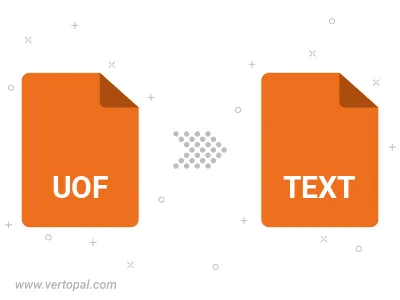Convert UOF to TEXT MARKDOWN
Convert UOF documents to TEXT MARKDOWN format, edit and optimize documents online and free.

The UOF (Uniform Office Document) file extension is used for documents created in the Uniform Office Format, an open standard developed in China for office productivity applications. It supports word processing, presentations, and spreadsheets, using XML formatting. The format was designed to be compatible with various software. The UOF format compresses all document contents in a file container, and while the UOF extension is generic, specific extensions like UOT (text), UOP (presentations), and UOS (spreadsheets) are more commonly used.
A TEXT file extension, associated with Markdown Documentation, which simplifies writing and formatting text for web and technical documentation. Markdown, created by John Gruber in 2004, facilitates easy-to-read, plain-text documents that can be converted to HTML. It's essential for developers and writers to create structured documents quickly and efficiently, enhancing productivity and readability without complex code.
Drag & drop any UOF file from your device or click the Choose File button to proceed.
Check the file preview quickly and use UOF to TEXT MARKDOWN tools if you need to change the conversion settings.
Wait a couple of seconds for the converter to do the hard job, then download your TEXT MARKDOWN file.

To change UOF format to TEXT MARKDOWN, upload your UOF file to proceed to the preview page. Use any available tools if you want to edit and manipulate your UOF file. Click on the convert button and wait for the convert to complete. Download the converted TEXT MARKDOWN file afterward.
Follow steps below if you have installed Vertopal CLI on your macOS system.
cd to UOF file location or include path to your input file.Follow steps below if you have installed Vertopal CLI on your Windows system.
cd to UOF file location or include path to your input file.Follow steps below if you have installed Vertopal CLI on your Linux system.
cd to UOF file location or include path to your input file.